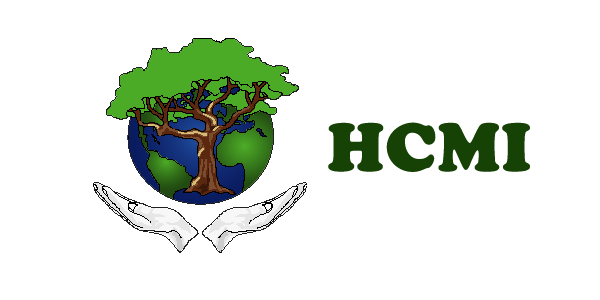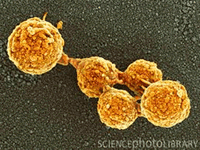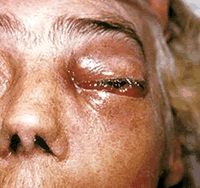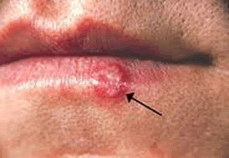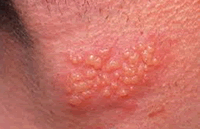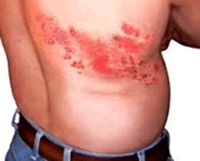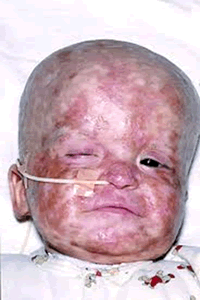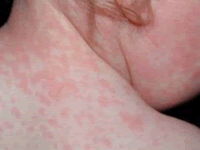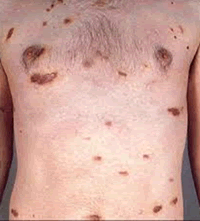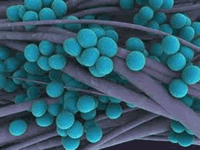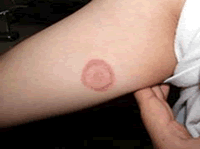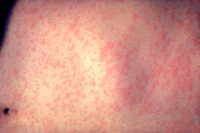Nosebleed
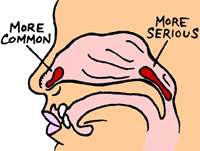
The medical term for nosebleed is epistaxix. It is defined as "bleeding from the nose" and is also referred to as nasal hemorrhage. Because the nose is inconveniently situated right in the middle of the face, and it is very rich in blood vessels, most people have had a nosebleed at least once from one reason or another. Nosebleeds are seldom a cause for alarm, but there are rare cases where it may represent a serious issue.
Spontaneous nosebleeds are fairly common, especially in children. When the mucous membrane inside the nose dries, crusts, or cracks and is then picked, it is likely to bleed. Most childhood nosebleeds are called anterior nosebleeds because the bleeding originates from the lower nasal septum (the wall between the two nostrils). This part of the nose contains many delicate blood vessels that receive blood from the carotid arteries. The slightest knock or bump can cause these vessels to bleed. Additional causes of anterior nosebleed include blowing your nose too hard, sinusitis, cold or flu, deviated septum, climate, high altitude, nasal allergies, liver disease and excessive use of illegal drugs. With exception to the last two, a nosebleed from any of these is not a cause for alarm and should subside in a matter of moments.
A posterior nosebleed originates further back and higher up in the nose where the artery branches supply blood to the nose, which is why it is a heavier bleed and often induces nasal hemorrhage. These can last up to 20 minutes and are much more common in adults. These can be triggered by hypertension, nasal surgery, severe calcium deficiency, exposure to chemicals that may irritate the mucous membranes, and of course, trauma/injury to the nose. If nosebleeds of this nature happen often, more serious conditions like a blood clotting disorder, leukemia, hemophilia, or even a brain tumor might be considered. Signs that a nosebleed might need medical attention include two or more of the following: heavy bleeding, palpitations (an irregular heartbeat), swallowing large amounts of blood that cause you to vomit, shortness of breath, or turning pale.
NOTE: Nosebleeds are also common in people taking blood-thinning medications, such as Aspirin or Warfarin (Coumadin), as well as elderly people whose blood may take longer to clot. If you are having frequent nose bleeds since being on a blood thinner, consider reducing the amount you take, or even better, consider natural blood thinners, like Cayenne and liquid Chlorophyll or Nattokinase.
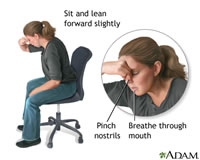
Stopping a nosebleed is generally simple (see photo).
If you have a minor nose bleed, sit down and pinch your nostrils together firmly, breathing through your mouth.
If it does not stop in a couple of minutes:
- Make sure you are sitting upright so that your head is higher than your heart to reduce blood pressure and consequently stop further bleeding.
- Lean your head forward a little, not backward, in order to prevent the blood from draining into your sinuses and throat, which can result in inhaling the blood or gagging.
- Apply an ice pack to your nose and cheek to soothe the area and try not to strain yourself for the next few days.
- If the nose bleed has not stopped after 20 minutes, consider medical attention. If you suspect the nose is broken, it is recommended you get that fixed so it does not heal in the wrong position.
Home Remedy: If you have frequent nose bleeds that don't seem serious, meaning they always stop within a few minutes, try increasing your Vitamin C levels. I have found that when capillaries get so weak that they bleed easily, it is a Vitamin C deficiency 99% of the time. 1000mg/day is generally enough but you can take all you want. It is water soluble so your body will easily eliminate any excess.
NOTE: There is no remedy for Nosebleed, as the issue is a general condition of capillaries, so the general Bleeding remedy is offered. The Bleeding remedy is effective to help control/stop all forms of bleeding from nose, abrasions, gums (like after brushing teeth), control bleeding after surgery or tooth extraction, and control prolonged bleeding of menstrual cycles. The Injury Remedy was listed because it needs to be added to your protocols if the origin of the Bleeding included any kind of trauma.
